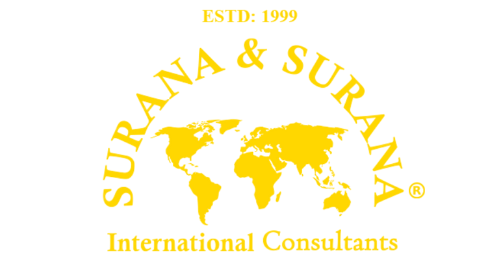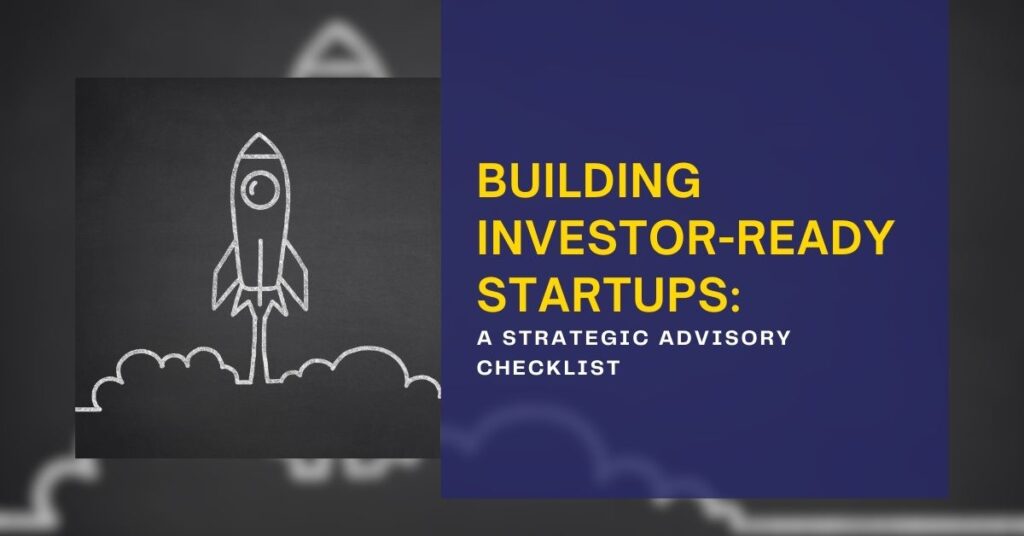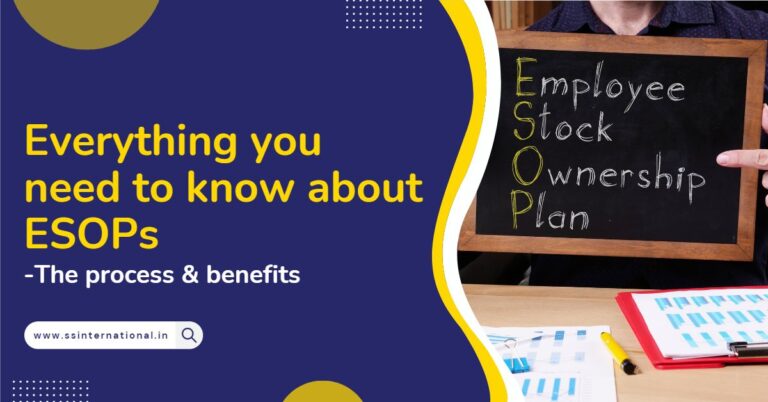In the dynamic world of startups, a groundbreaking idea is just the beginning. While innovation fuels the entrepreneurial spirit, securing investment requires more than just a compelling concept. Investors seek startups that not only promise growth but also demonstrate readiness through structured operations, clear financials, and strategic foresight.
Consider this: A study by CB Insights revealed that 38% of startups fail because they run out of cash, often due to inadequate planning and lack of investor support. This statistic underscores the importance of being investor-ready—not just in terms of product development but in showcasing a comprehensive, scalable business model.
Being “investor-ready” encompasses several critical aspects:
- Robust Corporate Structure: Clear legal frameworks and governance policies that instill confidence.
- Transparent Financials: Accurate and up-to-date financial statements that reflect the company’s health.
- Intellectual Property Protection: Safeguarding innovations to maintain competitive advantage.
- Scalable Business Model: Demonstrating potential for growth and adaptability in changing markets.
- Regulatory Compliance: Adherence to legal standards to mitigate risks.
- Strong Team Dynamics: A cohesive team with defined roles and responsibilities.
- Risk Management Strategies: Identifying potential pitfalls and outlining mitigation plans.
- Comprehensive Investor Materials: Well-prepared documents that facilitate due diligence.
This blog aims to serve as a strategic advisory checklist, guiding startups through the essential steps to become truly investor-ready. By addressing each of these areas, founders can not only attract potential investors but also lay a solid foundation for sustainable growth and success.
Strong Corporate Structure and Governance
A startup’s corporate structure and governance practices are often the first areas investors examine during due diligence. An unclear or poorly managed corporate setup can immediately raise red flags, regardless of the potential of the product or service. Building a strong legal and governance foundation signals professionalism, reduces perceived risk, and facilitates smoother future fundraising rounds.
a. Establishing the Right Legal Entity
Why It Matters:
The choice of legal structure impacts liability, taxation, fundraising ability, and scalability.
Key Considerations:
- Incorporate as a Private Limited Company (in India) or a C-Corporation (in the U.S.) if serious about raising institutional funding.
- Avoid operating indefinitely as a sole proprietorship or unregistered entity.
- Ensure clear documentation of founders’ equity shares from the outset.
- Set up holding companies if planning to scale internationally or build multiple ventures.
Investor Viewpoint:
Investors prefer clean, standardized corporate setups that are legally robust and familiar with global funding norms.
b. Clear Shareholding and Equity Ownership Structures
Why It Matters:
Cap table confusion is one of the top reasons investors walk away. Disputes over founder shares, unvested equity, or hidden obligations can derail funding.
Key Practices:
- Maintain a Cap Table that is updated, transparent, and simple.
- Implement vesting schedules for founders’ equity (standard: 4 years with a 1-year cliff).
- Formalize employee stock option plans (ESOPs) early if planning to attract senior talent.
Investor Viewpoint:
A clean, well-maintained Cap Table demonstrates professionalism, ensures incentive alignment, and reduces future dilution conflicts.
c. Founders’ Agreements and Legal Documents
Why It Matters:
Founders’ relationships are often tested under pressure. A formal agreement minimizes misunderstandings regarding roles, responsibilities, decision-making, exit rights, and conflict resolution.
Key Documents to Have:
- Founders’ Agreement (detailing roles, responsibilities, exit clauses)
- Shareholders’ Agreement
- Articles of Incorporation / Memorandum of Association
- Intellectual Property Assignment Agreements (from founders to the company)
Investor Viewpoint:
Investors want assurance that key internal relationships are contractually protected, reducing operational risks.
d. Formation of an Advisory Board or Independent Oversight
Why It Matters:
An advisory board lends credibility, strategic direction, and access to networks beyond the founding team.
Key Practices:
- Identify and onboard 2–3 experienced advisors from relevant industries.
- Formalize their roles and expectations (equity, retainer, advisory agreement).
- Consider independent directors for corporate governance if scaling toward a Series A+ round.
Investor Viewpoint:
Startups that demonstrate external validation through advisory boards or governance committees are seen as mature and investment-ready.
e. Governance and Decision-Making Protocols
Why It Matters:
Clear, codified governance processes prevent internal conflicts and ensure faster, risk-mitigated decisions.
Key Elements:
- Regularly scheduled board or advisory meetings.
- Delegation of authority frameworks (who can sign contracts, approve budgets, etc.).
- Formal minutes of key meetings and resolutions, even in early-stage companies.
Investor Viewpoint:
Startups that demonstrate disciplined governance and decision-making appear more resilient and trustworthy during funding due diligence.
Clean and Transparent Financials
When investors evaluate a startup, they’re not just looking at the potential market size or the brilliance of the idea — they’re carefully assessing financial discipline.
Clean, transparent, and professionally maintained financials are non-negotiable for building investor confidence.
Poor financial hygiene is one of the fastest ways to erode trust and lose momentum during fundraising conversations.
a. Importance of Professional Bookkeeping
Key Practices:
- Maintain accurate books from day one using accounting software (e.g., QuickBooks, Zoho Books, Tally).
- Track every transaction — no matter how small — systematically and timely.
- Reconcile bank statements monthly.
- Segregate income and expenses clearly by category for better financial reporting.
Investor Viewpoint:
A startup with sloppy bookkeeping signals a lack of operational control, making it a risky investment.
b. Updated and Audit-Ready Financial Statements
Key Documents to Maintain:
- Profit and Loss Statement (P&L): Shows revenues, costs, and profitability over time.
- Balance Sheet: Details assets, liabilities, and equity at a point in time.
- Cash Flow Statement: Tracks cash inflows and outflows critical for assessing liquidity.
- Revenue Projections and Financial Forecasts: Realistic, well-structured future financial plans.
Pro Tip:
For later-stage funding (Series A and beyond), an audit or at least an independent review by a reputable accounting firm is highly advisable.
Investor Viewpoint:
Professional, transparent, and audit-ready financials show maturity and make due diligence far smoother and faster.
c. Clear Separation Between Founder and Company Finances
Key Practices:
- Maintain a dedicated corporate bank account.
- Ensure all company expenses are paid directly from the company account.
- Pay founders a fixed salary or draw from the company, properly documented.
Investor Viewpoint:
Clear separation of finances reinforces professionalism, reduces legal complications, and makes financial statements more credible.
d. Understand and Present Key Financial Metrics
Key Metrics to Know:
- Monthly Recurring Revenue (MRR) / Annual Recurring Revenue (ARR) (for SaaS and subscription models)
- Gross Margin
- Customer Acquisition Cost (CAC) and Lifetime Value (LTV)
- Burn Rate and Runway
- EBITDA (Earnings Before Interest, Taxes, Depreciation, and Amortization)
Investor Viewpoint:
Founders who can confidently discuss these metrics — and back them with clean financial data — are seen as financially savvy and operationally strong.
e. Financial Forecasts Based on Realistic Assumptions
Best Practices:
- Build three versions of financial forecasts: conservative, realistic, and optimistic.
- Base assumptions (e.g., growth rates, pricing, CAC) on actual data or credible market research, not arbitrary numbers.
- Stress-test scenarios (e.g., delayed customer payments, higher-than-expected churn).
Investor Viewpoint:
Realistic, data-backed financial models demonstrate strategic thinking and awareness of potential risks.
Protecting Intellectual Property and Key Assets
In today’s innovation-driven economy, intellectual property (IP) and proprietary assets often form the backbone of a startup’s competitive advantage. Investors know this — and they expect startups to have a well-structured approach to identifying, protecting, and leveraging these critical assets.
Startups that neglect IP protection risk losing market exclusivity, revenue potential, and, ultimately, valuation.
a. Register and Secure Core Intellectual Property
Key Actions:
- File patents for proprietary technologies or inventions as early as possible.
- Register trademarks for logos, brand names, slogans, and distinctive features.
- Secure copyrights for original content, designs, codebases, and creative work.
- Protect trade secrets with confidentiality protocols and limited access frameworks.
Investor Viewpoint:
Investors see strong IP protection as a sign of defensibility and long-term revenue security.
b. IP Ownership Must Reside With the Company
Key Actions:
- Execute IP Assignment Agreements, transferring all IP created by founders, employees, or contractors to the company.
- Ensure freelance agreements explicitly assign all created work to the startup.
Investor Viewpoint:
Investors avoid companies where key IP might still legally belong to individual founders or external contractors.
c. Confidentiality and Non-Disclosure Agreements (NDAs)
Why It Matters:
Protect sensitive information during partnerships, fundraising discussions, or hiring.
Key Actions:
- Implement NDAs with employees, advisors, vendors, and potential investors where appropriate.
- Educate internal teams about IP sensitivity and confidentiality obligations.
Investor Viewpoint:
Robust confidentiality practices indicate operational maturity and risk management capability.
d. Strategic Management of IP
Key Actions:
- Conduct IP audits annually.
- Evaluate monetization opportunities through licensing or partnerships.
- Plan for international protection if operating in multiple geographies.
Investor Viewpoint:
Startups with a dynamic and monetizable IP strategy can justify higher valuation multiples.
Defining a Scalable Business Model
A brilliant idea without a clear, scalable business model rarely attracts sustained investment.
Investors fund businesses, not just ideas.
They want to see that your startup has figured out how it will make money repeatedly, efficiently, and at increasing scale.
a. Demonstrate Product-Market Fit (PMF)
Key Actions:
- Show initial sales, pilots, partnerships, or meaningful user traction.
- Document customer feedback loops and iterations made based on market response.
Investor Viewpoint:
Clear PMF reduces market adoption risk — a major funding decision factor.
b. Clear and Replicable Revenue Model
Why It Matters:
Investors seek businesses with reliable, repeatable revenue-generation mechanisms.
Key Revenue Models:
- SaaS subscription models
- Transaction fees or commissions
- Licensing models
- Freemium to premium conversion strategies
- Direct product sales with recurring upsells or services
Investor Viewpoint:
A predictable, scalable revenue model enhances revenue visibility and future forecasting accuracy.
c. Strong Unit Economics
Key Metrics to Focus On:
- Customer Acquisition Cost (CAC): What it costs to acquire a customer.
- Lifetime Value (LTV): Revenue generated per customer over their lifecycle.
- Payback Period: How long it takes to recover CAC.
- Gross Margin: Percentage of revenue retained after direct costs.
Investor Viewpoint:
Healthy unit economics signal sustainable growth potential.
d. Scalable Operational Structure
Key Actions:
- Build automation into sales, marketing, and customer support early.
- Create playbooks and SOPs (Standard Operating Procedures).
- Optimize hiring frameworks for scalable team growth.
Investor Viewpoint:
A startup demonstrating operational scalability appears more ready for Series A/B funding rounds.
e. Market Size Validation
Key Metrics:
- TAM (Total Addressable Market): Entire revenue opportunity available.
- SAM (Serviceable Available Market): Portion you can realistically serve.
- SOM (Serviceable Obtainable Market): Portion you can capture in the short term.
Investor Viewpoint:
Startups targeting large, expanding markets are inherently more attractive.
Investor Communication Materials Preparedness
Even the best businesses can lose funding opportunities if they fail to communicate effectively with investors.
Investor readiness is not just operational — it’s presentational.
Clear, well-organized, and professionally crafted materials demonstrate that a startup respects an investor’s time and due diligence processes.
a. A Compelling Investor Pitch Deck
Key Components:
- Problem: Clear articulation of the pain point you are solving.
- Solution: Your unique value proposition and product overview.
- Market Opportunity: Size, growth potential, and trends (TAM, SAM, SOM).
- Business Model: How you make money, with clarity on unit economics.
- Traction: Key metrics, milestones, and user/customer growth.
- Competition: Landscape overview and your differentiation strategy.
- Team: Core leadership and why they’re uniquely suited to succeed.
- Financials: 3–5 year projections, key metrics, and funding ask.
- Use of Funds: How you will allocate the investment.
Investor Viewpoint:
A concise, data-backed, visually clean pitch deck reflects strategic clarity and preparation.
b. Creation of a Well-Organized Data Room
Key Documents to Include:
- Corporate incorporation certificates and legal documents
- Shareholders’ agreements, cap table, and ESOP documents
- IP ownership and registration proofs
- Financial statements (audited or management-certified)
- Key customer contracts, partnership agreements, NDAs
- Compliance certificates and regulatory licenses
- Team resumes and key HR documents (if applicable)
- Board resolutions and meeting minutes
Best Practices:
- Use a secure, cloud-based platform like Dropbox, DocSend, or a virtual data room (VDR).
- Organize files into labeled folders for easy navigation.
Investor Viewpoint:
A clean, professionally prepared data room creates momentum and builds investor trust during due diligence.
c. Executive Summary and Elevator Pitch
Key Practices:
- Draft a one-page executive summary capturing the essence of your business and investment ask.
- Refine a 30–60 second elevator pitch that crisply communicates your startup’s story, traction, and opportunity.
Investor Viewpoint:
First impressions are critical; concise communication reflects strategic focus and self-awareness.
Conclusion: The Mindset Shift from Startup to Investable Business
Being “investor-ready” isn’t about cosmetic improvements made during a funding round — it’s about adopting the mindset of a serious, scalable business right from the early stages.
From clean corporate structures to transparent financials, from IP protection to risk mitigation strategies, from building strong teams to mastering investor communication — every aspect signals to potential investors that this startup isn’t just chasing growth — it’s ready for it.
Key Takeaway:
Investors fund execution, preparedness, and governance as much as they fund vision.
A startup that invests in becoming truly investor-ready creates a double advantage:
- It accelerates access to capital.
- It lays the foundation for sustainable, long-term growth.
In today’s competitive funding environment, startups must move beyond the idea of simply “seeking investment” — they must become businesses worth investing in.




